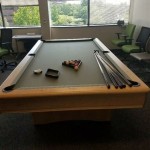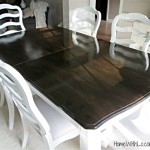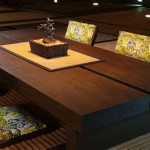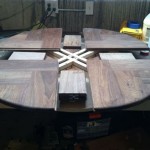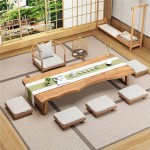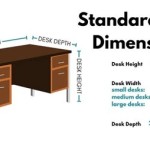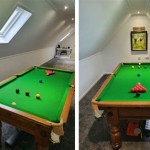Bar Size Pool Tables: A Comprehensive Guide
Bar size pool tables, often referred to as 7-foot pool tables, represent a popular and practical choice for home game rooms, commercial establishments, and recreational spaces. They offer a balance between playing surface area, space requirements, and affordability, making them a versatile option for both casual players and more serious enthusiasts. Understanding the dimensions, construction, and characteristics of bar size pool tables is essential for making an informed purchasing decision.
The term "bar size" arose from the prevalence of these tables in commercial settings like bars and pubs. Their compact footprint allows them to fit comfortably in smaller spaces while still providing a reasonable playing experience. However, the term can be somewhat misleading, as not all 7-foot tables are created equal, and variations exist in construction quality, materials, and overall playability.
This article will delve into the specifics of bar size pool tables, exploring their dimensions, construction features, advantages and disadvantages, and factors to consider when selecting a table for a particular environment. It will also touch upon maintenance and care to ensure longevity and optimal playing conditions.
Key Dimensions and Space Requirements
The defining characteristic of a bar size pool table is its playing surface dimensions. A standard 7-foot pool table has a playing surface that measures 39 inches wide by 78 inches long. The overall dimensions of the table, including the rails, usually extend beyond these measurements, typically reaching approximately 44 inches wide by 83 inches long. It is crucial to note that these are nominal dimensions, and slight variations may occur between manufacturers.
Beyond the table's physical dimensions, adequate space is required around the table to comfortably accommodate players and allow for unobstructed cue strokes. A general rule of thumb is to allow at least 5 feet of space around all sides of the table. This translates to a minimum room size of 14 feet by 17 feet for a 7-foot pool table, assuming the use of standard 57-inch pool cues. If shorter cues are used, or if some players are comfortable with shorter shots, a slightly smaller room may be sufficient.
Accurate measurement of the available space is paramount before purchasing a bar size pool table. Potential obstructions such as walls, furniture, and doorways should be carefully considered to ensure a comfortable and enjoyable playing experience. Utilizing masking tape to outline the proposed table area on the floor can be a helpful way to visualize the space requirements and identify any potential issues.
The ceiling height should also be taken into account. Low-hanging light fixtures or other ceiling obstructions can interfere with cue strokes and diminish the playing experience. Ideally, the ceiling height should be at least 8 feet to provide ample clearance for players of all heights.
Furthermore, the location of the table within the room should be carefully considered. Ideally, the table should be positioned away from high-traffic areas and sources of distraction. Natural light can enhance the playing environment, but excessive glare should be avoided. Artificial lighting should be adequate and evenly distributed to provide optimal visibility of the playing surface.
Construction Materials and Quality
The quality of a bar size pool table is directly related to the materials used in its construction. The most critical components determining the table's performance and durability are the slate bed, the frame, the rails, and the cloth.
The slate bed is the foundation of the pool table and is responsible for providing a perfectly flat and level playing surface. High-quality slate is typically made from Brazilian or Italian slate and ranges in thickness from ¾ inch to 1 inch or even thicker for higher-end tables. Thicker slate provides greater stability and resistance to warping, ensuring consistent ball roll. The slate is typically supported by a robust wooden frame that provides structural integrity and prevents sagging.
The frame is another critical component that supports the slate bed and provides overall stability to the table. Solid hardwood frames are the most durable and offer the best resistance to warping and twisting. Softwood frames are less expensive but may not provide the same level of support and longevity. The frame should be securely joined and reinforced to prevent movement and maintain the flatness of the slate bed.
The rails, also known as cushions, are the rubber bumpers that surround the playing surface and provide rebound for the billiard balls. High-quality rails are made from a durable yet resilient rubber compound that offers consistent ball response and long-lasting performance. The rails should be securely attached to the frame and precisely aligned to ensure accurate bounce angles. The cloth that covers the rails should be tightly stretched and smoothly stapled to prevent wrinkles and ensure consistent ball roll.
The cloth, also known as felt, covers the slate bed and provides the playing surface upon which the billiard balls roll. High-quality cloth is typically made from a blend of wool and nylon, offering a balance of durability, speed, and accuracy. The cloth should be tightly stretched and seamlessly installed to prevent wrinkles and ensure consistent ball roll. Different types of cloth are available, with varying nap and weave patterns that affect the ball speed and spin. Tournament-grade cloth is typically faster and more precise, while recreational cloth is more durable and forgiving.
The legs of the pool table should be sturdy and well-constructed to provide stable support for the entire table. Solid wood legs are generally more durable and aesthetically pleasing than metal or composite legs. The legs should be securely attached to the frame and equipped with adjustable levelers to ensure the table is perfectly level, regardless of the floor's imperfections.
Advantages and Disadvantages of Bar Size Tables
Bar size pool tables offer several advantages that make them a popular choice for various settings. Their compact size is a major benefit, allowing them to fit comfortably in smaller spaces where a full-size table would be impractical. This makes them ideal for home game rooms, apartments, and smaller commercial establishments.
Another advantage is their affordability. Bar size pool tables are typically less expensive than larger tables, making them an attractive option for budget-conscious buyers. The reduced material requirements and simplified construction contribute to the lower price point.
Furthermore, 7-foot tables provide a reasonable playing experience for both casual and serious players. The playing surface is large enough to allow for a variety of shots and strategies, while still being manageable for beginners. The smaller size can also make the game faster-paced and more exciting.
However, bar size pool tables also have certain disadvantages to consider. The smaller playing surface can limit the complexity of certain shots and strategies. Experienced players may find the tighter confines restrictive and prefer the larger playing area of a 9-foot table.
Another potential disadvantage is the quality variation among different brands and models. Low-end bar size pool tables may be constructed with inferior materials and lack the precision and durability of higher-end tables. This can result in uneven ball roll, inconsistent rail response, and a shorter lifespan.
The smaller size can also make it challenging to accommodate multiple players comfortably. With limited space around the table, players may feel cramped and restricted, especially during crowded games.
Finally, the resale value of bar size pool tables may be lower than that of larger, more desirable tables. If future relocation to a larger space is anticipated, opting for a larger table initially might be a more prudent investment.
In summary, bar size pool tables offer a compelling combination of size, affordability, and playability. However, careful consideration should be given to the available space, construction quality, and intended use before making a purchase. Selecting a well-constructed table from a reputable manufacturer can ensure a rewarding and enjoyable playing experience for years to come.

The Official Size Of A Pool Table Canadian Home Leisure

What Is The Standard Size Of A Pool Table Measurement Guide Room

Correct Pool Table Dimensions To Leave Enough Room For Playing Billiard

Pool Table Room Size Guide Home

Pool Table Size Chart Moving The Experts

Pool Table Sizing Dimensions Room Size

Bar Size Pool Table Nice Condition Nex Tech Classifieds

What Is The Best Size Pool Table To Have

Sold At Auction Custom Bar Size Pool Table With Accessories

How Tall Is A Standard Pool Table Height Guide Bar 101

